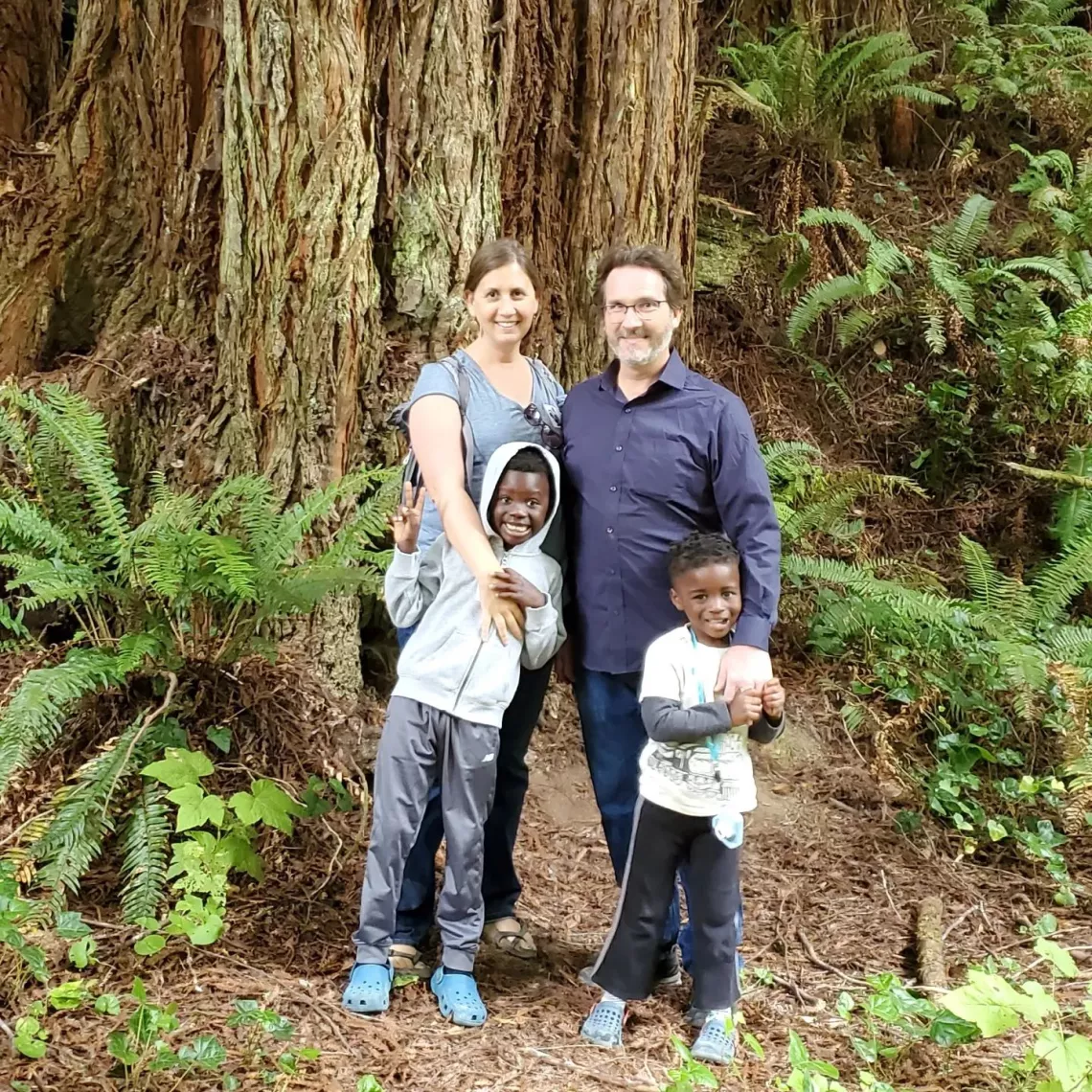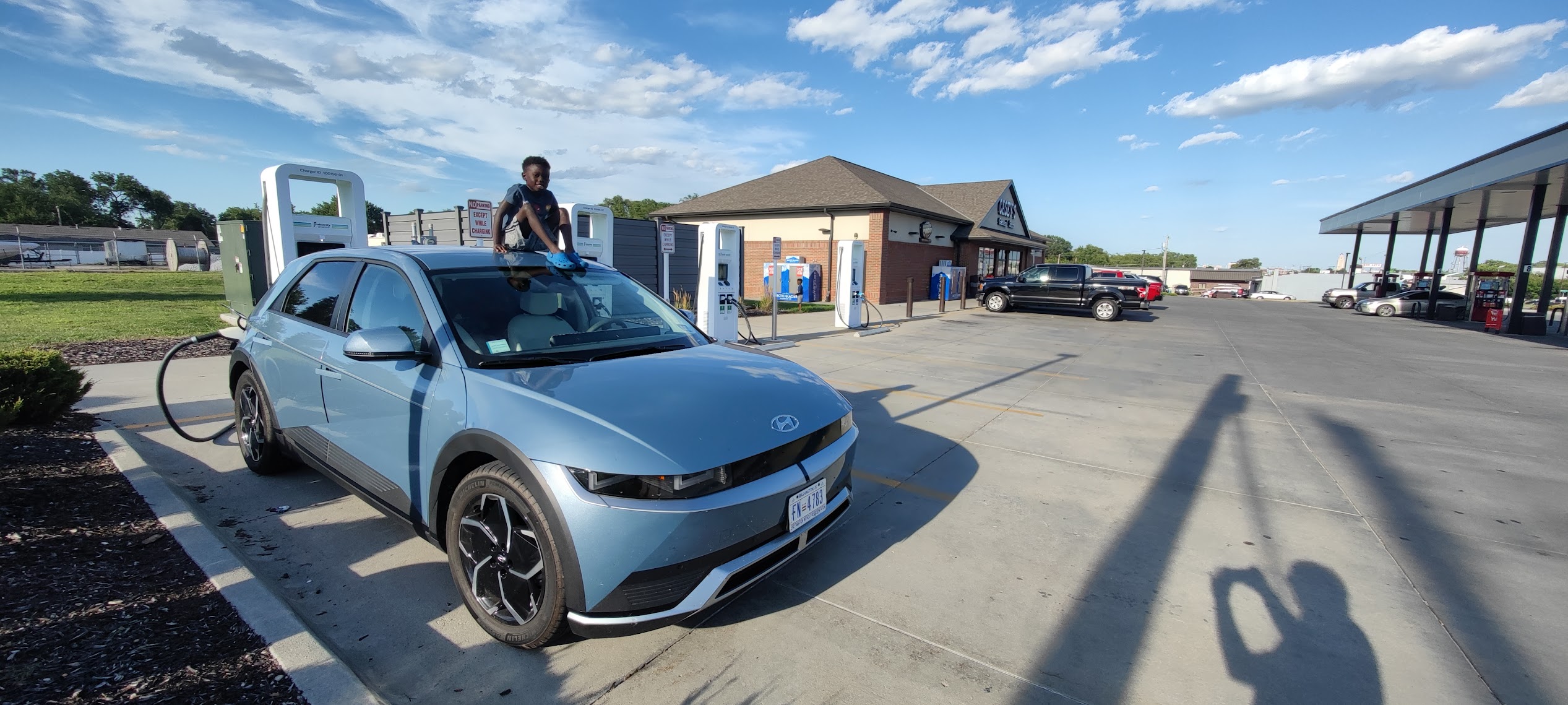After being cooped up by the COVID-19 pandemic for so long, we wanted to spend the summer in California where Jackie used to live, and make memories with our family in a place so dear to her. But driving from Washington, DC all the way to California in a gas car was not an option for us. Transportation is the largest source of climate pollution. With the climate crisis on our doorstep, we weren’t going to go if we couldn’t find a way to minimize our carbon footprint.
At the beginning of the summer, when gas prices hit upwards of $5/gallon, we took the leap and bought a Hyundai Ioniq 5. We finally tracked one down at a dealership in New Jersey. Despite grand commitments to electrification, automakers are still lagging on production of affordable electric vehicle (EV) models while they continue to manufacture and advertise gas-powered cars. There’s still so much both the auto industry and dealerships must do to make it easier for a person to buy an EV. The car came with two years of free charging at Electrify America charging stations. With the recent passage of the Inflation Reduction Act, prospective EV buyers can benefit from tax rebates for new and used EVs and installing EV chargers in their home. And, these incentives can be stacked on top of local and state offerings as well.
We can’t tell you how many people tried to discourage us from driving across the country in our new EV. Won’t you need to stop and charge constantly? How much range does it get? Are there even charging stations in middle America? Wait, you are doing this with two young kids?
Kyle mapped out the route to make sure we’d be able to charge as needed. There are several apps that make this type of mapping simple. The Electrify America app showed us where to find the charging stations we needed. Plugshare helped us find all EV charging stations, regardless of brand, and gave us up-to-the-day information and reviews from other EV drivers so we knew in advance if one of the chargers was broken or working slowly. Plugshare was particularly useful in finding us free chargers in several National Parks. For example, Rivian has a free charging station in the parking lot of the Ahwahnee Hotel inside Yosemite National Park. We enjoyed a lovely dinner overlooking El Capitan while we juiced up.
Our ride was long, and we did have to stop and charge more frequently than we would have with a gas car. Our EV gets 275 miles per charge on average, with considerably more range in the city due to regenerative braking. Meandering through the Rockies was a bit nerve-wracking as we were losing range quickly twisting up to the continental divide, but coming down the other side evened things out and gave us plenty of range to make it to the next charging station. One thing that we didn’t know before purchasing an EV is that they do charge relatively fast up to 80 percent. Once the car hits 80 percent, the charging slows down to protect the battery. We found that it was often quicker and more efficient to do a quick charge to 80 percent and stop more frequently to charge.

Like in Yosemite, many of the national parks and public lands we visited had chargers that enabled us to charge while we hiked. We found chargers at Indiana Dunes National Park, Point Reyes National Seashore, and Russian Gulch State Park. Carlsbad Caverns National Park in New Mexico should really consider installing charging stations in the visitor center parking lot as there aren’t many nearby, making our visit to Carlsbad one of our riskier moves. We are glad we took the risk; the caverns were absolutely breathtaking and gave us a nice break from the heat.
Besides Carlsbad, there were only one or two places where the charging stations were few and far between. Driving from Iowa to Colorado, we ended up caravaning with a cohort of EV drivers heading the same direction. Every few hours, we’d reconnect at the only charging station on our route. One family driving a Ford Mustang Mach-E was using their entire frunk (front truck, since there is no engine) as a cooler for their family road trip; it was full of food and ice, and could be easily drained when needed.
In California, charging was a breeze. Across the state, you’ll find free charging stations. We were grateful to be in California when the commitment to shift to only electric car sales by 2035 was announced. We arrived at Bothe-Napa State Park, our home for two weeks while the kids went to summer camp at Connolly Ranch. California, like much of the country, was in the midst of a heat wave and very serious drought. It was hot, and we were camping in a rustic yurt without electricity at the state park. We ended up purchasing a small table fan and used the car as a power source to run it so we could get some sleep at night.
After two weeks of camp and remote work, our family was finally on vacation. We hiked among the redwoods in Mendocino, scrambled up the rocks to the lower Yosemite falls, kayaked around Tufas in Mono Lake, went tide-pooling at Slide Ranch in the Golden Gate National Recreation Area, and went down (and back up) hundreds of stairs to see the lighthouse at Point Reyes National Seashore. We are always grateful to be able to spend time in nature with our family. At the end of our time in California, confident in the route, we returned to Washington, DC, the drive back even smoother than our drive there.
National Drive Electric Week, which Sierra Club has been a national organizer of for over a decade, is this month! If this story has sparked your curiosity about making the switch to an EV, check out a local event in your community to talk to other EV owners and get behind the wheel of one.
